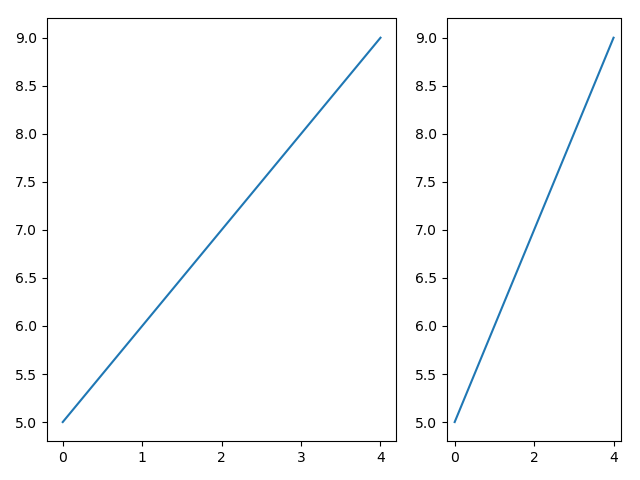

#Matplotlib subplot title size how to#
We then saw how to use the fontsize and prop parameters to change the font size of a Matplotlib legend.Per the official guide, use of pylab is no longer recommended. We first saw what a legend is in Matplotlib, and some examples to show its basic usage and parameters. It can be used to describe the elements that maker up a graph. In this article, we talked about the legend function in Matplotlib. Here's the output: matplotlib legend size using prop parameter Summary Here's how to use it: import matplotlib.pyplot as plt How To Change Legend Font Size in Matplotlib Using the prop ParameterĪnother way of changing the font size of a legend is by using the legend function's prop parameter.

You'd also notice the legend was placed at the upper left corner of the graph using the loc parameter. We assigned a font size of 20 to the fontsize parameter to get the legend size in the image above: fontsize="20". Here's what the legend would look like: matplotlib legend size using fontsize parameter Changing the font size for individual components Set the default text font size plt.rc(font, size16) Set the axes title font size plt.rc(axes. Plt.legend(, fontsize="20", loc ="upper left")
#Matplotlib subplot title size code#
Here's another code example with the fontsize parameter included: import matplotlib.pyplot as plt Plt.show() matplotlib graph with default legend font size Here's what the default legend font size looks like: import matplotlib.pyplot as plt You can change the font size of a Matplotlib legend by specifying a font size value for the fontsize parameter. Note, here we use pyplot.subplotmosaic, and use the subplot labels as keys for the subplots, which is a nice convenience. Simplest is putting the label inside the axes. How To Change Legend Font Size in Matplotlib Using the fontsize Parameter Labelling subplots is relatively straightforward, and varies, so Matplotlib does not have a general method for doing this. You can change the position of the legend using the following values of the loc parameter: This makes it easier for anyone viewing the graph to know that the blue line denotes age while the orange line denotes number in the graph. In the graph above, we've used the legend function to describe each line in the plot. Plt.show() two line graph with different legend descriptions Here's an example: import matplotlib.pyplot as plt With the legend function, you can assign different descriptions to each line of a graph.

A description of "Data" was assigned to the legend, and was placed in the upper right corner of the graph using the upper right value of the loc parameter. In the graph above, we described the plot using a legend. Plt.show() matplotlib graph with a legend You'll then learn how to change the font size of a Matplotlib legend using:Ī legend is a Matplotlib function used to describe elements that make up a graph.Ĭonsider the graph below: import matplotlib.pyplot as plt In this article, you'll learn what a legend is in Matplotlib, and how to use some of its parameters to make your plots more relatable.

xfloat, default: 0.5 The x location of the text in figure coordinates. You can modify different properties of a plot - color, size, label, title and so on - when working with Matplotlib. User guide Develop Releases stable Section Navigation (t, kwargs) source Add a centered suptitle to the figure.


 0 kommentar(er)
0 kommentar(er)
